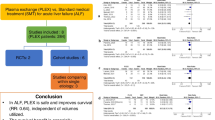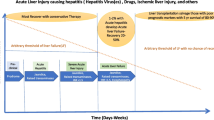Abstract
Background
There is paucity of data on intermediate-term post liver transplant outcomes from South Asia. The objective of this study was to determine survival outcomes in patients who underwent living donor liver transplantation (LDLT) in a busy liver transplant center in Pakistan.
Methods
This study was a review of patients who underwent LDLT between 2012 and 2016. A total of 321 patients were included in this study. Early (within 90 days) and late (>90 days) morbidity and mortality was assessed. Estimated 1- and 4-year survival was determined.
Results
Median age was 48 (18–73) years. Male to female ratio was 4.5:1. Out of total 346 complications, 184 (57.3%) patients developed 276 (79.7%) complications in early post-transplant period, whereas there were 70 (21.3%) late complications. Most common early complication was pleural effusion in 46 (16.6%) patients. Biliary complications were the most common late complication and were seen in 31/70 (44.2%) patients. Overall 21.4% patients had a biliary complication. The 3-month mortality was 14%. The estimated 1- and 4-year OS for a MELD cutoff of 30 was 84.5 versus 72 and 80 versus 57% (P = 0.01). There was no donor mortality.
Conclusion
Acceptable intermediate-term post-transplant outcomes were achieved with LDLT. There is a need to improve outcomes in high-MELD patients.



Similar content being viewed by others
References
Dar FS, Bhatti AB, Dogar AW, Zia H et al (2015) The travails of setting up a living donor liver transplant program: experience from Pakistan and lessons learned. Liver Transpl 21:982–990
Miller C, Florman S, Kim-Schluger L et al (2004) Fulminant and fatal gas gangrene of the stomach in a healthy live liver donor. Liver Transpl 10:1315–1319
Kim PTW, Testa G (2016) Living donor liver transplantation in the USA. Hepatobiliary Surg Nutr 5:133–140
Soin AS, Thiagarajan S (2016) Liver transplant scene in India. MAMC J Med Sci 2:6–11
Poonacha P, Sibal A, Soin AS et al (2001) India’s first successful pediatric liver transplant. Indian Pediatr 38:287–291
Narasimhan G, Kota V, Rela M (2016) Liver transplantation in India. Liver Transpl 2016(22):1019–1024
Sudhindran S (2011) Experience at Amrita institute of medical sciences, Kochi, Kerala. In: Nundy S (ed) Liver transplantation in India. Elsevier, New Delhi
Soin AS (2011) Our journey of liver transplantation at Sir GangaRam and Medanta hospitals: a rewarding decade of trials and tribulations. In: Nundy S (ed) Liver transplantation in India. Elsevier, New Delhi
Narasimhan G (2016) Liver transplantation in India. Hepatobiliary Surg Nutr 5(2):127–132
Lim SG, Aghemo A, Chen PJ et al (2017) Management of hepatitis C virus infection in the Asia-Pacific region: an update. Lancet Gastroenterol Hepatol 2:52–62
Dar FS, Zia H, Hafeez Bhatti AB et al (2016) Short term donor outcomes after hepatectomy in living donor liver transplantation. J Coll Physicians Surg Pak 26(4):272–276
Dindo D, Demartines N, Clavien PA (2004) Classification of surgical complications: a new proposal with evaluation in a cohort of 6336 patients and results of a survey. Ann Surg 240:205–213
Chen P, Wang W, Yan L (2014) The morbidity and survival of 196 consecutive cases undergoing liver transplantation in a single center in Mainland China: ten-year experience. Ann Transpl 13(19):13–22
Marsh JW, Gray E, Ness R et al (2009) Complications of right lobe living donor liver transplantation. J Hepatol 51(715–24):21
Morioka D, Egawa H, Kasahara M et al (2007) Outcomes of adult-to-adult living donor liver transplantation: a single institution’s experience with 335 consecutive cases. Ann Surg 245:315–325
Marcos A, Ham JM, Fisher RA et al (2000) Single-center analysis of the first 40 adult-to-adult living donor liver transplants using the right lobe. Liver Transpl 6:296–301
Poon KS, Chen TH, Jeng LB et al (2012) A high model for end-stage liver disease score should not be considered a contraindication to living donor liver transplantation. Transpl Proc 44:316–319
Chan SC, Fan ST, Lo CM et al (2008) A decade of right liver adult-to-adult living donor liver transplantation: the recipient mid-term outcomes. Ann Surg 248:411–419
Olthoff KM, Abecassis MM, Emond JC, Adult-to-Adult Living Donor Liver Transplantation Cohort Study Group et al (2011) Outcomes of adult living donor liver transplantation: comparison of the adult-to-adult living donor liver transplantation cohort study and the national experience. Liver Transpl 17:789–797
Lake JR, Steffen BJ, Chu AH et al (2005) Differential effects of donor age in liver transplant recipients infected with hepatitis B, hepatitis C and without viral hepatitis. Am J Transpl 5:549–557
Akamatsu N, Sugawara Y (2013) Living-donor liver transplantation and hepatitis C. HPB Surg 2013:985972
Miller CM (2003) Regulation and oversight of adult living donor liver transplantation. Liver Transpl 9(Suppl 2):S69–S72
Saha A, Naidu CS, Ramesh GS et al (2012) Liver transplantation in Indian armed forces initial experience. Med J Armed Forces India 68:110–117
Soin AS, Kumaran V, Rastogi AN et al (2010) Evolution of a reliable biliary reconstructive technique in 400 consecutive living donor liver transplants. J Am Coll Surg 211:24–32
Chen P, Wang W, Yan L (2014) The morbidity and survival of 196 consecutive cases undergoing liver transplantation in a single center in Mainland China: ten-year experience. Ann Transpl 19(13–22):16
Pomposelli JJ, Verbesey J, Simpson MA et al (2006) Improved survival after live donor adult liver transplantation (LDALT) using right lobe grafts: program experience and lessons learned. Am J Transpl 6:589–598
Marubashi S, Dono K, Nagano H et al (2009) Biliary reconstruction in living donor liver transplantation: technical invention and risk factor analysis for anastomotic stricture. Transplantation 88(1123–1130):18
Kim SH, Lee KW, Kim YK et al (2010) Tailored telescopic reconstruction of the bile duct in living donor liver transplantation. Liver Transpl 16:1069–1074
Gondolesi GE, Varotti G, Florman SS et al (2004) Biliary complications in 96 consecutive right lobe living donor transplant recipients. Transplantation 77:1842–1848
Yaprak O, Dayangac M, Akyildiz M et al (2012) Biliary complications after right lobe living donor liver transplantation: a single-centre experience. HPB 14:49–53
Shah SA, Grant DR, McGilvray ID et al (2007) Biliary strictures in 130 consecutive right lobe living donor liver transplant recipients: results of a Western center. Am J Transpl 7:161
Rela M, Reddy MS (2016) Failure to rescue as a novel quality metric in pediatric liver transplantatation. Transplantation 100:707
Cramm SL, Waits SA, Englesbe MJ et al (2016) Failure to rescue as a quality improvement approach in transplantation: a first effort to evaluate this tool in pediatric liver transplantation. Transplantation 100:801–807
Perumpail RB, Yoo ER, Cholankeril G et al (2016) Underutilization of Living donor liver transplantation in the United States: bias against MELD 20 and higher. J Clin Transl Hepatol 4:169–174
Abt PL, Mange KC, Olthoff KM et al (2004) Allograft survival following adult-to-adult living donor liver transplantation. Am J Transpl 4:1302–1307
Jacob M, Copley LP, Lewsey JD et al (2004) Pre-transplant MELD score and post liver transplantation survival in the UK and Ireland. Liver Transpl 10:903–907
Yoo HY, Thuluvath PJ (2005) Short-term post liver transplant survival after the introduction of MELD scores for organ allocation in the United States. Liver Int 25:536–541
Brandão A, Fuchs SC, Gleisner AL et al (2009) MELD and other predictors of survival after liver transplantation. Clin Transpl 23:220–227
Selzner M, Kashfi A, Cattral MS et al (2010) Live donor liver transplantation in high MELD score recipients. Ann Surg 251:153–157
Lee J, Chung MY (2011) Does the model for end-stage liver disease score predict transfusion amount, acid-base imbalance, haemodynamic and oxidative abnormalities during living donor liver transplantation? J Int Med Res 39:1773–1782
Feng ZY, Jin XD, Chen YZ (2008) Predictors of massive blood transfusion in liver transplantation for patients with benign end-stage liver disease. Zhonghua Yi Xue Za Zhi 88:3040–3044
Li C, Wen TF, Mi K et al (2012) Analysis of infections in the first 3-month after living donor liver transplantation. World J Gastroenterol 18:1975–1980
Panchal HJ, Durinka JB, Patterson J et al (2015) Survival outcomes in liver transplant recipients with model for end-stage liver disease scores of 40 or higher: a decade-long experience. HPB 17:1074–1084
Petrowsky H, Rana A, Kaldas FM et al (2014) Liver transplantation in highest acuity recipients: identifying factors to avoid futility. Ann Surg 259:1186–1194
Author information
Authors and Affiliations
Corresponding author
Ethics declarations
Conflict of interest
The authors declare that they have no conflict of interest.
Rights and permissions
About this article
Cite this article
Dar, F.S., Bhatti, A.B.H., Qureshi, A.I. et al. Living Donor Liver Transplantation in South Asia: Single Center Experience on Intermediate-Term Outcomes. World J Surg 42, 1111–1119 (2018). https://doi.org/10.1007/s00268-017-4259-1
Published:
Issue Date:
DOI: https://doi.org/10.1007/s00268-017-4259-1




